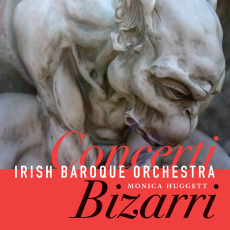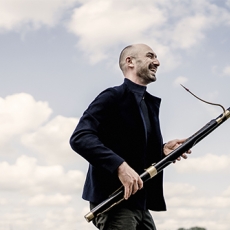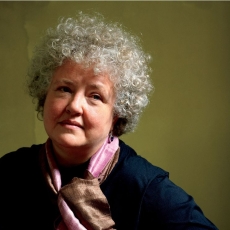IBO - Concerti Bizarri - American Record Guide
In her new life with her Irish ensemble, the superlative violinist Huggett was struck by the suite that the composer Telemann titled Le Bizarri. She has assembled a program of 18th Century concertos that she apparently thinks are “bizarre”.
Well, they are mostly unusual in scoring, not to say even eccentric sometimes, but understandable for an era where the concerto grosso format was being expanded and rethought in a wide range of experimentation.
There are seven concertos, written by five composers. The earliest is Antonio Vivaldi (1678-1741), whose three-movement Concerto in G minor for two cellos with strings and continuo (R.53) exemplifies his love of trying out varied solo combinations. Then there is Georg Philipp Telemann, a one-man machine for experimenting with solo mixtures. We have here a four-movement Concerto in D with two violins and bassoon as the solo protagonists.
From Johann Heinichen (1683-1729) we have nothing more odd than a three-movement oboe concerto. Johann Friedrich Fasch (1688-1758) contributes two items: a threemovement Concerto in B minor for flute and oboe—a not unusual combination in this era—and a four-movement Concerto in G for two oboes da caccia, two violas, bassoon, and continuo, without strings—an extension of the kind of “chamber concerto” of which Vivaldi had been such an exponent.
Then there is Christoph Graupner (1683- 1760), also represented by two works. One is a three-movement Concerto in C for solo bassoon, a somewhat uncommon choice for a solo role, but hardly astonishing. The other is more of a curiosity: a four-movement Concerto in G that combines flute d’amore, oboe d’amore, and viola d’amore as solo instruments with the strings—a certainly novel combination of three instruments that were on the way into obscurity.
The music for all these works is most enjoyable: full of game-playing with the varied colors brought together in various ways, but carried out in otherwise quite conventional styles of ensemble writing, and without a grotesque note to be heard.
So, where is the bizarria? Can’t we just forget about eye-catching hype and be honest? This is an extremely fine program of 18th Century concertos, filled with a wide variety of coloristic explorations and combinations typical of the time. Nothing more. The performances show absolute perfection of technique and style, brought off by a basic string band of 12 players with harpsichord, plus 5 wind players, several of them distinguished guests (like bassoonist Peter Whelen and flutist Lisa Beznosiuk). And in beautiful sound, to boot.



